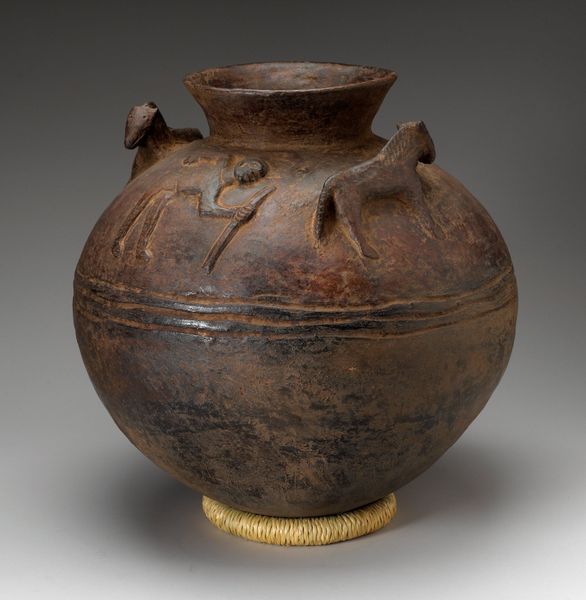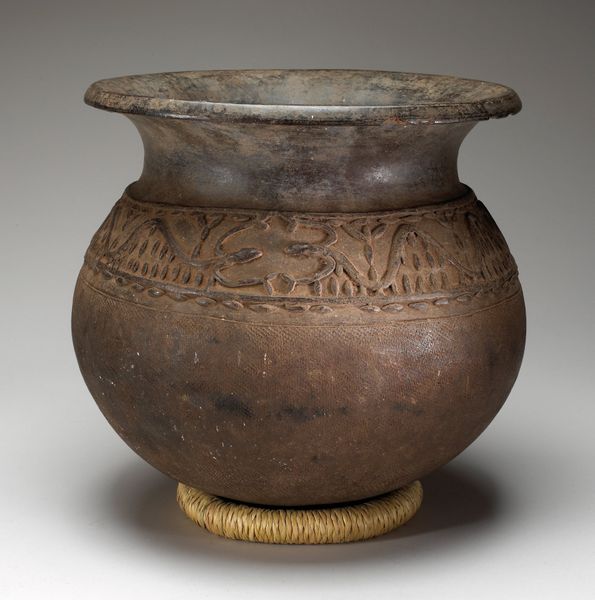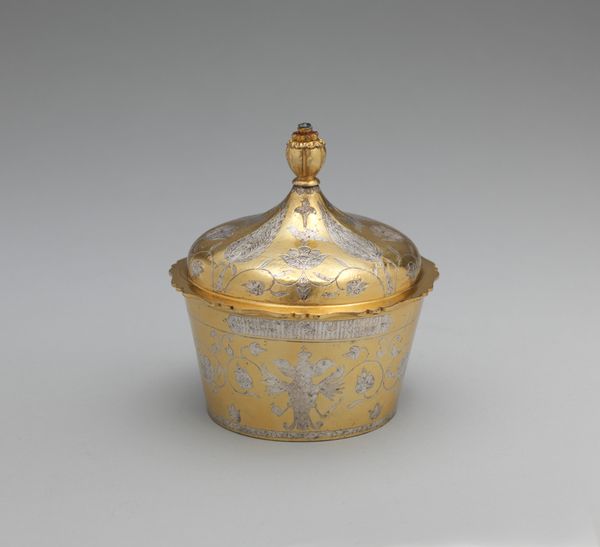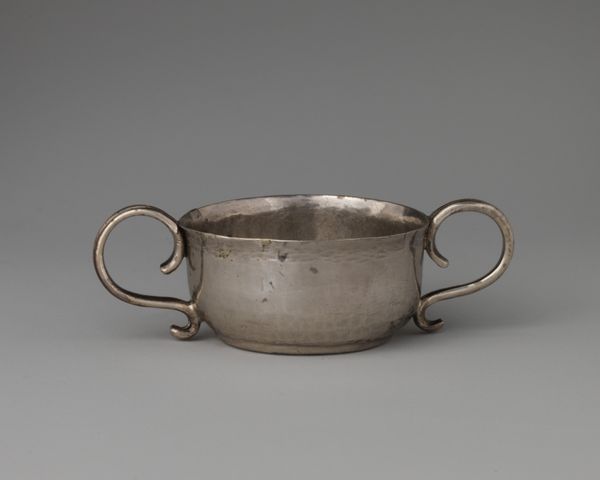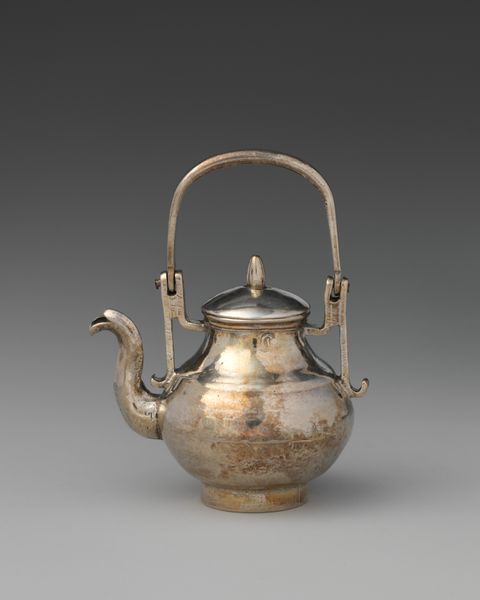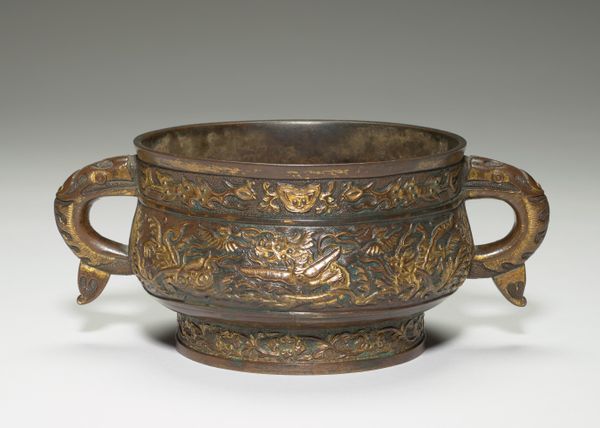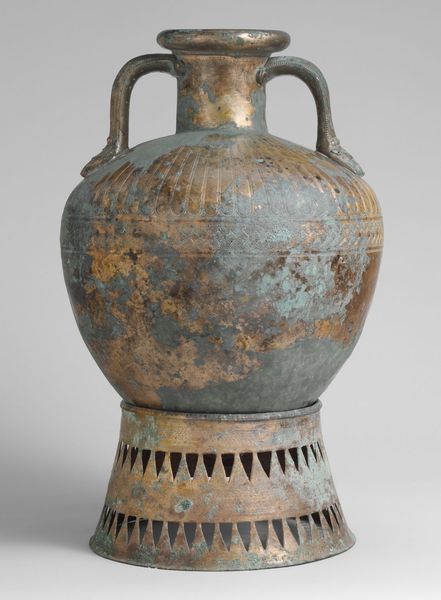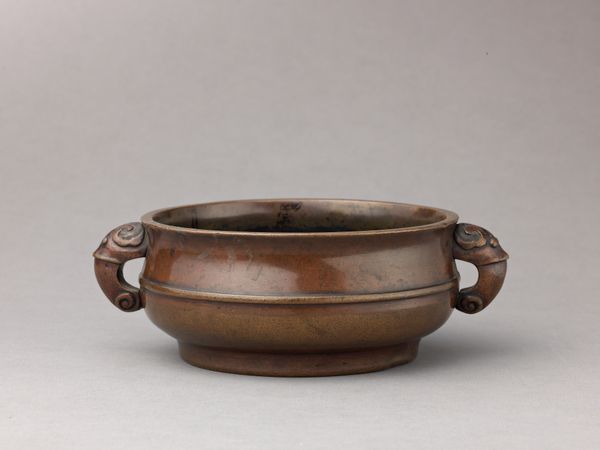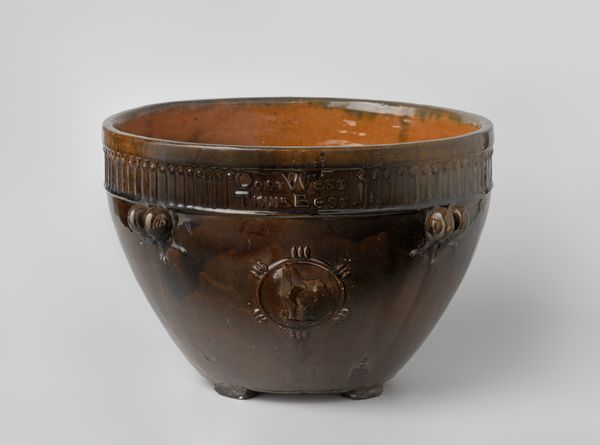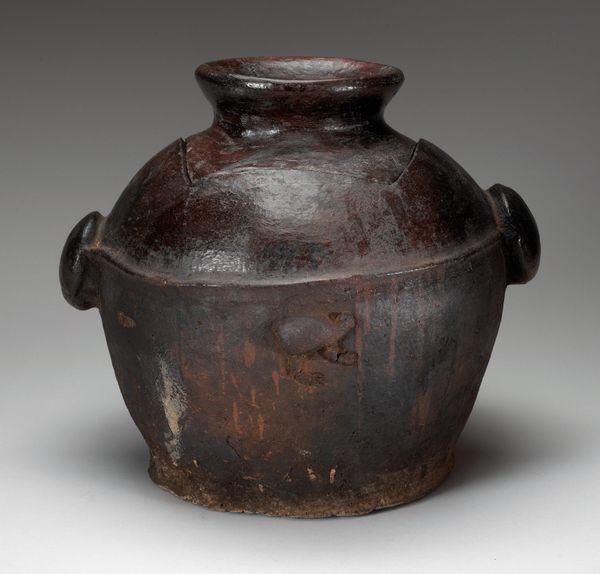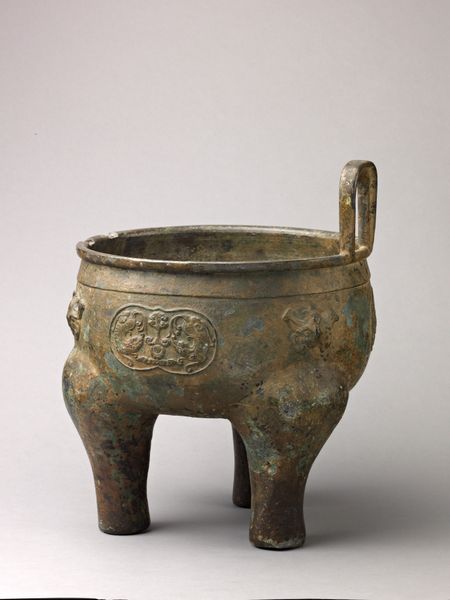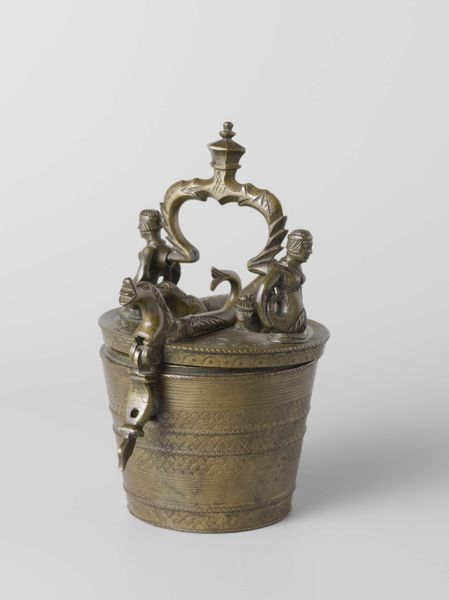
Bowl (Tas) with Attached Handles, Decorated with Horsemen and Solar Motif c. 14th century
0:00
0:00
carving, metal, bronze
#
medieval
#
carving
#
metal
#
asian-art
#
bronze
Dimensions: 10.3 × 20.3 cm (4 1/16 × 8 in.); height with handle up 20.8 cm (8 3/16 in.)
Copyright: Public Domain
Curator: Let's discuss this fascinating bronze bowl, known as a 'Tas', complete with attached handles and attributed to the 14th century. The piece resides here at the Art Institute of Chicago. Editor: My initial impression is of incredible density. The entire surface, save for a few accents, is covered in minute detail. It’s overwhelming in a beautiful way; like some visual representation of maximalism avant la lettre. Curator: Precisely. These "Tas" bowls were part of a larger cultural phenomenon, reflecting trade and cultural exchange. What might those dense surface details signify from a contemporary point of view? Editor: Considering the interplay of signifiers: the riders, the solar motifs, that very heavy material… it speaks of hierarchical power, surely. Maybe of journeys or conquests, visualized for the bowl's owner and guests? The eye struggles to separate image from ground, suggesting that such visual rhetoric may have served as a means to represent a sort of “imperial” view. Curator: Yes, many were commissioned by elites or were intended as diplomatic gifts, communicating prestige and influence. Those stylized horsemen evoke Central Asian nomadic traditions, potentially alluding to both actual equestrian skill and dominance in a symbolic sense. Furthermore, the solar motifs... Editor: ...act as symbolic affirmations of dynastic authority, the rulers identifying themselves with cosmic power! You've highlighted an important element; note how the bowl is effectively treated as one field without conventional orientation, much like symbols observed in cosmological artwork across many regions of the world, reflecting that which surpasses terrestrial comprehension. Curator: These intricate, carved bronze pieces demonstrate how deeply connected artistry and sociopolitical status were in medieval Asia, acting as both a luxury commodity and medium of cultural expression. Editor: For me, stepping back, its almost vibrating materiality is most captivating, a testament to its layered signifiers, complex production, and visual force. Curator: A beautiful articulation; looking through a contemporary lens allows us to engage more critically with this intricate artwork's cultural legacy and implications.
Comments
No comments
Be the first to comment and join the conversation on the ultimate creative platform.
